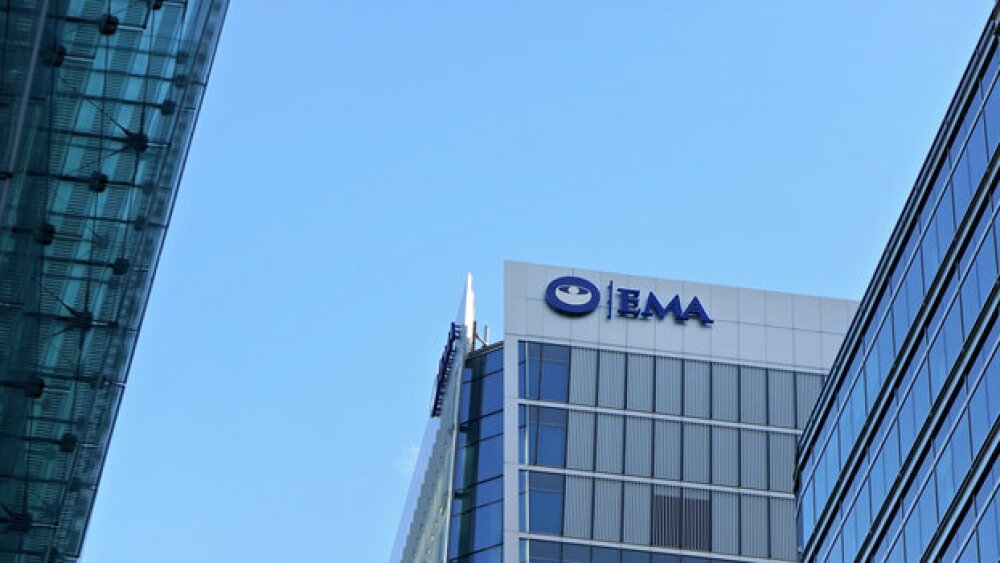GlaxoSmithKline plc announced results from PRIMA (ENGOT-OV26/GOG-3012), the Phase 3 randomised, double-blind, placebo-controlled study of Zejula (niraparib) as a maintenance therapy in women with first-line ovarian cancer following a response to platinum-based chemotherapy.
- The PRIMA study, presented in a Presidential Symposium at the 2019 European Society for Medical Oncology congress and simultaneously published in The New England Journal of Medicine, demonstrates that niraparib treatment resulted in a 38% reduction in the risk of disease progression or death in the overall study population when compared to placebo
- Importantly women in both the HR-deficient (‘HRD positive’) and HR-proficient (‘HRD negative’) subgroups experienced a clinically meaningful and statistically significant benefit
LONDON, Sept. 28, 2019 /PRNewswire/ -- GlaxoSmithKline plc (LSE/NYSE: GSK) today announced results from PRIMA (ENGOT-OV26/GOG-3012), the Phase 3 randomised, double-blind, placebo-controlled study of Zejula (niraparib) as a maintenance therapy in women with first-line ovarian cancer following a response to platinum-based chemotherapy. Niraparib treatment resulted in a 38% reduction in the risk of disease progression or death in the overall population (PFS, HR 0.62; 95% CI, 0.50–0.75; p<0.001).
These results were driven by a clinically meaningful reduction in risk of progression in women with:
- BRCA mutation tumours (risk reduction of 60%, HR 0.40 (95% CI, 0.27–0.62) p<0.001).
- HR-deficient BRCA wild type tumours (risk reduction of 50%, HR 0.50 (95% CI, 0.30–0.83), p=0.006).
- HR-proficient tumours (risk reduction of 32%, HR 0.68 (95% CI, 0.49–0.94), p=0.020).
The PRIMA study enrolled patients with a response to their first-line treatment with platinum-based chemotherapy including those with high risk of disease progression, a population with high unmet need and previously under-represented in first-line ovarian cancer studies.
Dr. Hal Barron, Chief Scientific Officer and President R&D, GSK said: “Ovarian cancer is the eighth most commonly occurring cancer in women worldwide and women with this devastating disease have a five-year survival rate of less than 50%. PRIMA is a landmark study as we believe these data have the potential to fundamentally change how women with ovarian cancer are treated.”
In an interim analysis of overall survival (OS), niraparib also demonstrated an encouraging trend toward improvement in OS relative to placebo. A pre-planned interim analysis of OS numerically favoured niraparib in the overall population (HR 0.70; 95% CI 0.44-1.11). In the HR-deficient subgroup, 91% of women on niraparib were alive at 24 months vs. 85% for placebo (HR=0.61; 95% CI, 0.27-1.40). These data are not yet mature, and the significance is not fully known. The OS interim analysis also showed 81% of women receiving niraparib in the HR-proficient subgroup were alive at 24 months vs. 59% of women receiving placebo (HR=0.51; 95% CI, 0.27-0.97).
Dr. Antonio Gonzalez, co-director, department of medical oncology, Clinica Universidad de Navarra, and Primary Investigator for PRIMA said: “The PRIMA study demonstrated the importance of maintenance therapy and the benefit that niraparib provided to women with ovarian cancer. I believe that niraparib monotherapy after surgery and platinum-based chemotherapy could be an important new treatment option for patients.”
Niraparib is not currently approved in the first-line ovarian cancer maintenance setting. GSK will share these data with the relevant health authorities and is on track to file by the end of the year.
The safety profile demonstrated in PRIMA did not differ from the established safety profile. The most common grade 3 or higher adverse events with niraparib included anaemia (31%), thrombocytopenia (29%), and neutropenia (13%). Implementation of an individualised dosing regimen based on body weight and/or platelet count reduced the incidence of haematological treatment-emergent adverse events. No new safety signals were identified. Validated patient reported outcomes indicate quality of life was similar between the niraparib and placebo treatment arms.
Niraparib is marketed in the United States and Europe under the trade name Zejula®.
About PRIMA
PRIMA is a double-blind, randomised Phase 3 study designed to evaluate niraparib versus placebo in first-line Stage III or IV ovarian cancer patients. The study assessed the efficacy of niraparib as maintenance treatment, as measured by progression free survival. Patients with a response to first-line platinum chemotherapy were randomised 2:1 to niraparib or placebo. The trial was amended to include an individualised niraparib starting dose of 200 mg once-daily in patients with baseline weight <77kg and/or platelet count <150K/μL and 300 mg in all other patients.
About Zejula (niraparib)
Niraparib is indicated as monotherapy for the maintenance treatment of adult patients with platinum-sensitive relapsed high grade serous epithelial ovarian, fallopian tube, or primary peritoneal cancer who are in response (complete or partial) to platinum-based chemotherapy.
Niraparib is an oral, once-daily PARP inhibitor that is currently being evaluated in three pivotal trials. GSK is building a robust niraparib franchise by assessing activity across multiple tumour types and by evaluating several potential combinations of niraparib with other therapeutics. The ongoing development programme for niraparib includes a Phase 3 trial as first-line monotherapy maintenance treatment in patients with first-line ovarian cancer (the PRIMA trial), a Phase 3 study as a first-line triplet maintenance treatment in ovarian cancer (FIRST), a Phase 3 trial for the treatment of patients with germline BRCA-mutated, metastatic breast cancer (the BRAVO trial), and a Phase 2 study of niraparib combined with bevacizumab maintenance treatment in advanced ovarian cancer (OVARIO).
Several combination studies are also underway, including trials of niraparib plus pembrolizumab in metastatic, triple-negative breast cancer and advanced, platinum-resistant ovarian cancer (the TOPACIO trial). Janssen Biotech has licensed rights to develop and commercialise niraparib specifically for patients with prostate cancer worldwide, except in Japan.
Important Safety Information for ZEJULA
Myelodysplastic Syndrome/Acute Myeloid Leukaemia (MDS/AML), including some fatal cases, was reported in 1.4% of patients receiving ZEJULA vs 1.1% of patients receiving placebo in Trial 1 (NOVA), and 0.9% of patients treated with ZEJULA in all clinical studies. The duration of ZEJULA treatment in patients prior to developing MDS/AML varied from <1 month to 2 years. All patients had received prior chemotherapy with platinum and some had also received other DNA damaging agents and radiotherapy. Discontinue ZEJULA if MDS/AML is confirmed.
Haematologic adverse reactions (thrombocytopenia, anaemia and neutropenia) have been reported in patients receiving ZEJULA. Grade ≥3 thrombocytopenia, anaemia and neutropenia were reported in 29%, 25%, and 20% of patients receiving ZEJULA, respectively. Discontinuation due to thrombocytopenia, anaemia, and neutropenia occurred, in 3%, 1%, and 2% of patients, respectively. Do not start ZEJULA until patients have recovered from haematological toxicity caused by prior chemotherapy (≤ Grade 1). Monitor complete blood counts weekly for the first month, monthly for the next 11 months of treatment, and periodically thereafter. If haematological toxicities do not resolve within 28 days following interruption, discontinue ZEJULA, and refer the patient to a haematologist for further investigations.
Hypertension and hypertensive crisis have been reported in patients receiving ZEJULA. Grade 3-4 hypertension occurred in 9% of patients receiving ZEJULA vs 2% of patients receiving placebo in Trial 1, with discontinuation occurring in <1% of patients. Monitor blood pressure and heart rate monthly for the first year and periodically thereafter during treatment with ZEJULA. Closely monitor patients with cardiovascular disorders, especially coronary insufficiency, cardiac arrhythmias, and hypertension. Manage hypertension with antihypertensive medications and adjustment of the ZEJULA dose, if necessary.
Based on its mechanism of action, ZEJULA can cause foetal harm. Advise females of reproductive potential of the potential risk to a foetus and to use effective contraception during treatment and for 6 months after receiving their final dose. Because of the potential for serious adverse reactions from ZEJULA in breastfed infants, advise lactating women to not breastfeed during treatment with ZEJULA and for 1 month after receiving the final dose.
In clinical studies, the most common adverse reactions (Grades 1-4) in ≥10% of patients included: thrombocytopenia (61%), anaemia (50%), neutropenia (30%), leukopenia (17%), palpitations (10%), nausea (74%), constipation (40%), vomiting (34%), abdominal pain/distention (33%), mucositis/stomatitis (20%), diarrhoea (20%), dyspepsia (18%), dry mouth (10%), fatigue/asthenia (57%), decreased appetite (25%), urinary tract infection (13%), aspartate aminotransferase (AST)/alanine aminotransferase (ALT) elevation (10%), myalgia (19%), back pain (18%), arthralgia (13%), headache (26%), dizziness (18%), dysgeusia (10%), insomnia (27%), anxiety (11%), nasopharyngitis (23%), dyspnoea (20%), cough (16%), rash (21%) and hypertension (20%).
Common lab abnormalities (Grades 1-4) in ≥25% of patients included: decrease in haemoglobin (85%), decrease in platelet count (72%), decrease in white blood cell count (66%), decrease in absolute neutrophil count (53%), increase in AST (36%) and increase in ALT (28%).
About Ovarian Cancer
Approximately 300,000 women are diagnosed with ovarian cancer each year. Ovarian cancer is the eighth most frequent cause of cancer death among women. Despite high response rates to platinum-based chemotherapy in the second-line advanced treatment setting, approximately 85% of patients will experience recurrence within two years. Late-line treatment options for patients with ovarian cancer are few, with the proportion of patients achieving an overall response typically less than 10% when treated with chemotherapy.
GSK in Oncology
GSK is focused on maximising patient survival through transformational medicines. GSK’s pipeline is focused on immuno-oncology, cell therapy, cancer epigenetics and synthetic lethality. Our goal is to achieve a sustainable flow of new treatments based on a diversified portfolio of investigational medicines utilising modalities such as small molecules, antibodies, antibody drug conjugates and cells, either alone or in combination.
About GSK
GSK is a science-led global healthcare company with a special purpose: to help people do more, feel better, live longer. For further information please visit www.gsk.com.
Cautionary statement regarding forward-looking statements
GSK cautions investors that any forward-looking statements or projections made by GSK, including those made in this announcement, are subject to risks and uncertainties that may cause actual results to differ materially from those projected. Such factors include, but are not limited to, those described under Item 3.D ‘Principal risks and uncertainties’ in the company’s Annual Report on Form 20-F for 2018.
Registered in England & Wales:
No. 3888792
Registered Office:
980 Great West Road
Brentford, Middlesex
TW8 9GS
SOURCE GlaxoSmithKline plc
Company Codes: LSE:GSK, NYSE:GSK




